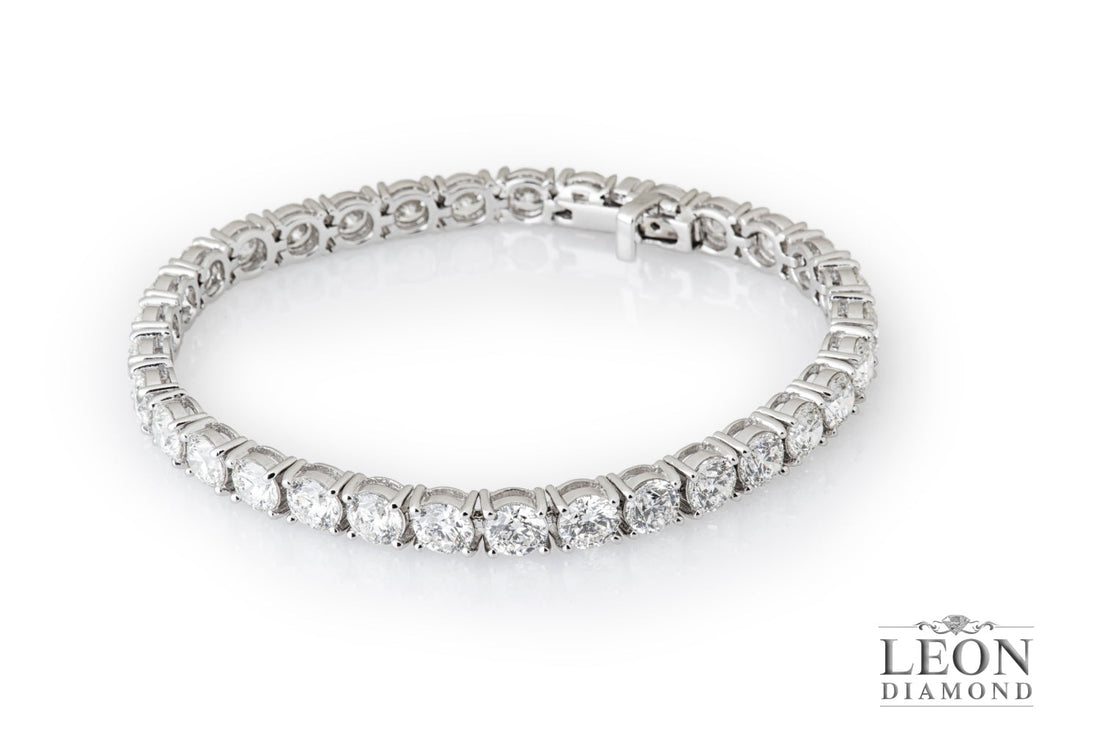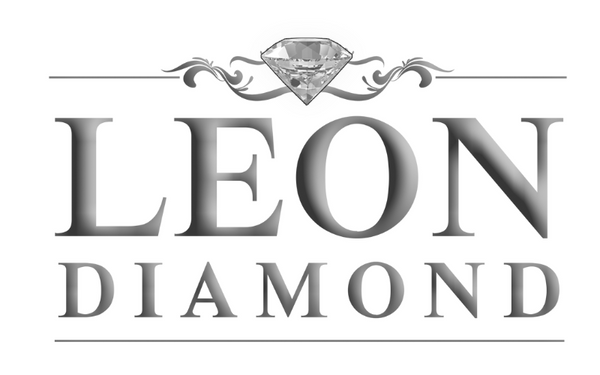
Why Are They Called Tennis Bracelets? The Iconic Name Explained
Share
At the 1978 US Open, a historic incident occurred that would forever change the name of a humble eternity band. During a match, Chris Evert's delicate bracelet slipped off her wrist, causing play to pause as she searched for the fallen diamond. In that split second, the bracelet earned a new name and a place in jewelry lore.
The tennis bracelet, with its pliant line of matched gemstones, most often round brilliant diamonds, each nestled in its prong and linked by a slender metal frame, is a unique design. Its secure clasp and smooth flexibility allow it to glide with every swing of the racket or turn of the wrist, catching light like a champion's victory.
In this article, you'll uncover the true origin of the "tennis bracelet" name, trace its journey from Art Deco elegance to modern styles, and discover why this piece remains a timeless symbol of grace and grit.
What Is a Tennis Bracelet?
Before diving into the story, let's clarify what a tennis bracelet is. A tennis bracelet is a slender, flexible band set with a continuous line of individually set diamonds or gemstones. The design is known for its symmetry, elegance, and secure clasp, which allows it to move comfortably with the wrist. This classic piece is celebrated for its versatility, making it suitable for both everyday wear and special occasions. Its understated beauty and timeless appeal have made it a staple in jewelry collections worldwide, inspiring a sense of adaptability and versatility.
How Did the Tennis Bracelet Evolve from Eternity to Icon?
![]()
To truly appreciate the name' tennis bracelet,' it is helpful to look back at its origins and see how its design and meaning have evolved. The journey from "eternity bracelet" to "tennis bracelet" is a fascinating one.
What Were the Early Designs Like?
Before it was known as a tennis bracelet, this piece was referred to as an "eternity bracelet" or a "diamond line bracelet." The design first appeared in the 1920s, during the Art Deco era, and featured a continuous loop of diamonds. These bracelets symbolized eternal love and were popular among those who wanted to express a lasting commitment.
How Did the Shift to Casual Elegance Happen?
The 1970s brought a shift in jewelry trends. Diamonds became more common in casual wear, thanks to lighter, more flexible settings. Chris Evert's habit of wearing diamond bracelets on the court set the stage for the famous 1987 incident. Following that, the term "tennis bracelet" gained widespread use, and the style became even more popular.
The Moment That Named the Tennis Bracelet
The story behind the name "tennis bracelet" begins not in a jewelry store, but on a tennis court. In 1987, during a high-profile match at the U.S. Open, tennis champion Chris Evert experienced an unexpected mishap. As she played, her diamond bracelet snapped and fell onto the court. Evert immediately asked the officials for a time-out so she could search for her lost jewelry. The match paused, and television cameras zoomed in as she and the officials scoured the court for the missing piece.
This unscripted moment was broadcast to millions of viewers. When asked about the incident in post-match interviews, Evert referred to her lost piece as her "tennis bracelet." The phrase caught the public's imagination, and soon, jewelers and fans alike began using the term. What was once simply a diamond line bracelet now has a new, unforgettable name that is forever linked to a dramatic moment in sports history.
What Were They Called Before? (Eternity and Line Bracelets)
To understand the impact of this naming moment, it helps to know what these bracelets were called before. Before the 1987 U.S. Open, the style was most commonly known as an "eternity bracelet" or a "diamond line bracelet." These names reflected the design's key features: a continuous, unbroken line of stones symbolizing eternity, love, and commitment.
The "eternity bracelet" was especially popular in the Art Deco era of the 1920s and 1930s, when geometric patterns and symmetry were in vogue. The term "diamond line bracelet" was also used, emphasizing the visual effect of a seamless row of sparkling gems. While these names described the bracelet's appearance and symbolism, they lacked the cultural resonance that the term "tennis bracelet" would soon achieve.
How Did the Name "Tennis Bracelet" Catch On?
The transformation from "eternity bracelet" to "tennis bracelet" did not happen overnight, but the Chris Evert incident was the spark that ignited it. The story quickly spread beyond the tennis world, capturing the attention of the media and the public. Jewelers recognized the marketing potential and began labeling similar designs as "tennis bracelets" in their displays and advertisements.
The name resonated because it was fresh, memorable, and tied to a real-life event that people could relate to. It also reflected a shift in how fine jewelry was worn and perceived. No longer reserved for formal occasions, the tennis bracelet became a symbol of effortless elegance, something you could wear on the court, at work, or to a gala. The term "tennis bracelet" soon became the standard, replacing the older, more formal names in both conversation and commerce.
Why Did the Name Resonate? (Cultural and Emotional Impact)
The story of the tennis bracelet's name is more than just a quirky anecdote. It reflects changing attitudes toward jewelry and fashion. The blend of sport and sophistication captured the public's imagination. Here's why the name stuck:
- Relatability: The idea that a world-class athlete would pause a match for a piece of jewelry made the bracelet feel accessible and personal.
- Versatility: The incident highlighted that fine jewelry could be worn anywhere, not just at formal events.
- Symbolism: The bracelet became a symbol of both luxury and resilience, embodying the idea that beauty and strength can coexist.
- Media Power: The widespread coverage of the event ensured that the story and the name reached a global audience.
The tennis bracelet's new identity made it more than just a piece of jewelry. It became a cultural icon.
How Has the Name Shaped the Bracelet's Legacy?

Since Chris Evert's unforgettable on-court moment, the term "tennis bracelet" has influenced nearly every aspect of jewelry culture. It has strengthened the bracelet's lasting appeal, inspired ongoing design innovations, and secured its place in pop culture.
Enduring Popularity
The tennis bracelet's association with a memorable sports moment gave it a story that people love to share. This narrative has helped the bracelet remain popular for decades, appealing to new generations of jewelry lovers.
Design Innovations
After the Chris Evert incident, jewelers began to focus more on secure clasps and flexible settings, ensuring that bracelets could withstand active lifestyles. The name also encouraged designers to create versions that were both sporty and elegant, blending luxury with practicality.
Pop Culture and Fashion
The tennis bracelet has appeared on red carpets, in movies, and in fashion magazines, often worn by celebrities and athletes. Its name and story have become part of its allure, making it a go-to accessory for those who appreciate both tradition and modernity.
Key Milestones in the History of the Tennis Bracelet
|
Era |
Development |
Features |
|
1920s–1930s |
Eternity/diamond line bracelets |
Continuous diamond line, Art Deco style |
|
1970s |
Shift to casual diamond wear |
Flexible, lightweight designs |
|
1987 |
Chris Evert's U.S. Open moment |
"Tennis bracelet" name, global attention |
|
1990s–Present |
Modern innovations |
Secure clasps, sporty elegance, and inclusivity |
Frequently Asked Questions
Why is a diamond bracelet called a tennis bracelet?
The name "tennis bracelet" was coined after a moment of unexpected elegance during the 1987 U.S. Open. Tennis star Chris Evert's diamond bracelet broke and slipped off during the match, prompting her to pause the game until it was found. The incident sparked massive media attention and gave rise to the term we now associate with these timeless, flexible diamond bracelets.
What is a tennis bracelet, and how is it different from an eternity bracelet?
A tennis bracelet is a flexible line of individually set diamonds or gemstones that wraps around the wrist with a secure clasp. In contrast, an eternity bracelet is often a continuous, rigid band of stones symbolizing endless love. While both share an elegant silhouette, the tennis bracelet offers more movement and comfort for daily wear.
When did the term "tennis bracelet" become popular?
Although diamond line bracelets date back to the Art Deco era of the 1920s, the term "tennis bracelet" became popular after Chris Evert's 1987 incident. Her televised match and the graceful way she handled the situation helped redefine the accessory and catapult it into jewelry history.
How did Chris Evert's tennis bracelet incident influence jewelry design?
Evert's mid-match mishap wasn't just a media moment; it inspired a wave of innovation. Jewelers began designing tennis bracelets with stronger, double-locking clasps and more secure, flexible settings. The goal was to ensure that the bracelet's beauty didn't compromise its durability or practicality.
Why does the tennis bracelet symbolize grace and resilience?
The tennis bracelet blends strength and softness, much like the athlete who brought it into the spotlight. Its flexible line of diamonds reflects adaptability, while its enduring sparkle speaks to timeless elegance. This balance makes it a modern symbol of grace under pressure and refined resilience.
Where can I buy classic and modern tennis bracelets today?
You can find a wide range of tennis bracelets at trusted jewelers who value craftsmanship and customization. Leon Diamonds, for example, offers both classic and contemporary designs tailored to your taste, from traditional diamond lines to innovative takes on this enduring icon.
From the Court to the Jewelry Case That Changed Everything
The tennis bracelet's transformation from a quiet eternity design to a global style icon demonstrates how one unexpected moment can create a whole new fashion legacy. What was once simply a line of diamonds became a symbol of grace, resilience, and movement, all thanks to Chris Evert's now-legendary match. Today, the tennis bracelet remains a staple in modern fashion, cherished for its versatility and timeless elegance.
If you're ready to add this iconic piece to your collection, explore the tennis bracelet line at Leon Diamonds. Our designs combine classic sophistication with exceptional craftsmanship, offering something for every style and occasion. Shop the collection or book a personalized consultation to discover a bracelet that moves with you and tells your story with every shine.
